21/03 - 19/05, 2018
-
Alice Ronchi
Majestic solitude
The natural poetry of places of worship appears to man as a metaphor for the unknown, places of silence and expectancy. A suspended atmosphere, defined through a diffused solemnity, silent light and pronounced archaism. Spirituality calls for monumental forms, ancestral memories, and primordial aspects. These are the premises for Alice Ronchi’s show, Majestic Solitude.
The artist adopts a narrative style that is powerful and delicate at the same time. Playing with the theme of dichotomy, she presents five new sculptures in the first room that invoke the monumental forms and archetypes of liturgical architecture, transforming the paradigms of architecture into profound emotions. Through their dimensions the sculptures become the reflection of those who look at them, their power is communicated through the use of precious materials – onyx, basalt and marble – which, used on a human scale, take on new symbolic values. The final room is instead given over to a new series of paintings: 33 works that become the direct mimesis of the artist’s thoughts, taking on the shape of fluctuating and immaterial bubbles. The positioning of the paintings in the well-lit room – a place of inherent introspection – reflects the ascent of the mind, the bubbles move inside the space from down low to up high. The works in the different two rooms relate to one another, one exists thanks to the other, and vice versa. Indeed, taken all together, there is no plurality of forms at all, but rather it is one single form that emerges: blending together they become the instrument for an experience of emotion. The final room completely overturns the sensoriality of the first, keeping to the sacred sphere but imbued with a sense of radiance.
Majestic Solitude is structured with a complex layering of intrinsic themes, which are mixed together through the use of light into a single unified message. The ambivalence of light as both functional and aesthetic becomes the process whereby the show unfolds. Ronchi uses light both as a link between the two spaces, as well as the immaterial vehicle of spiritual allusions. Light orients, directs and guides the viewer through the gallery space in search of a majestic solitude.
Joel Valabrega
The natural poetry of places of worship appears to man as a metaphor for the unknown, places of silence and expectancy. A suspended atmosphere, defined through a diffused solemnity, silent light and pronounced archaism. Spirituality calls for monumental forms, ancestral memories, and primordial aspects. These are the premises for Alice Ronchi’s show, Majestic Solitude.
The artist adopts a narrative style that is powerful and delicate at the same time. Playing with the theme of dichotomy, she presents five new sculptures in the first room that invoke the monumental forms and archetypes of liturgical architecture, transforming the paradigms of architecture into profound emotions. Through their dimensions the sculptures become the reflection of those who look at them, their power is communicated through the use of precious materials – onyx, basalt and marble – which, used on a human scale, take on new symbolic values. The final room is instead given over to a new series of paintings: 33 works that become the direct mimesis of the artist’s thoughts, taking on the shape of fluctuating and immaterial bubbles. The positioning of the paintings in the well-lit room – a place of inherent introspection – reflects the ascent of the mind, the bubbles move inside the space from down low to up high. The works in the different two rooms relate to one another, one exists thanks to the other, and vice versa. Indeed, taken all together, there is no plurality of forms at all, but rather it is one single form that emerges: blending together they become the instrument for an experience of emotion. The final room completely overturns the sensoriality of the first, keeping to the sacred sphere but imbued with a sense of radiance.
Majestic Solitude is structured with a complex layering of intrinsic themes, which are mixed together through the use of light into a single unified message. The ambivalence of light as both functional and aesthetic becomes the process whereby the show unfolds. Ronchi uses light both as a link between the two spaces, as well as the immaterial vehicle of spiritual allusions. Light orients, directs and guides the viewer through the gallery space in search of a majestic solitude.
Joel Valabrega
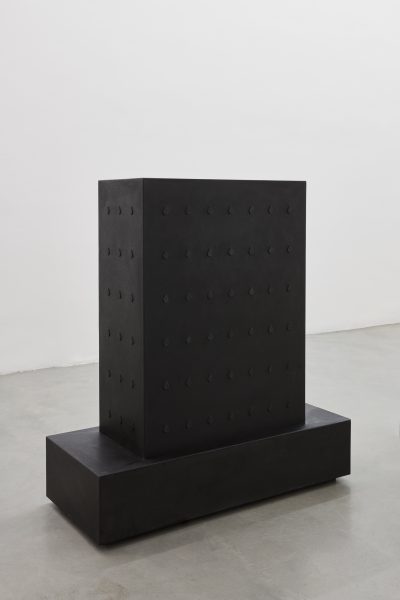 Majestic Solitude (Kaaba), 2018basalt, wood, aluminium
Majestic Solitude (Kaaba), 2018basalt, wood, aluminium
131×120×50 cm
Edition unique + 1 AP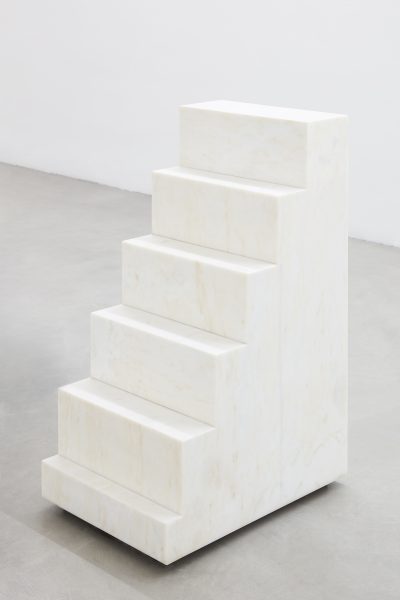 Majestic Solitude (Scala), 2018
Majestic Solitude (Scala), 2018
marble, wood, aluminium
108×51,5×71,5 cm
Edition unique + 1 AP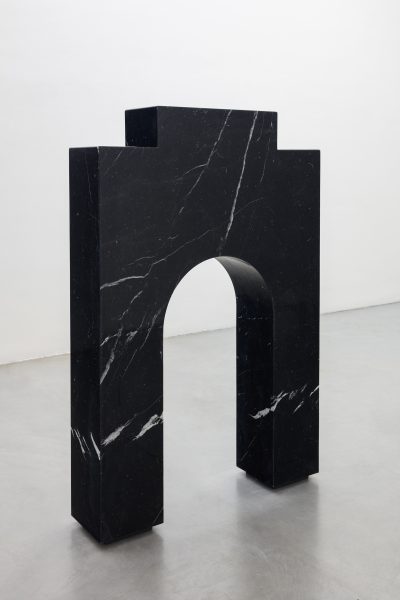 Majestic Solitude (Tempio), 2018
Majestic Solitude (Tempio), 2018
Nero marquina marble, wood
161×106×26 cm
Edition unique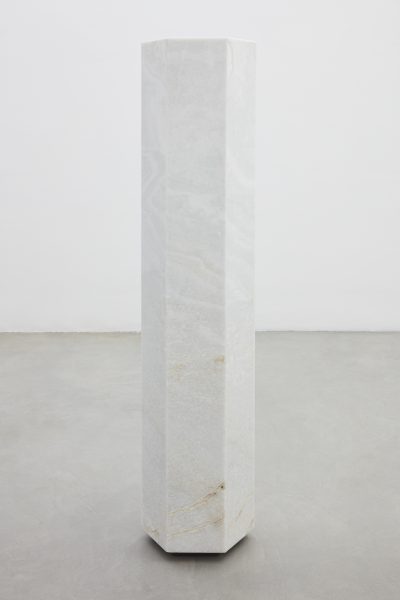 Majestic Solitude (Colonna), 2018
Majestic Solitude (Colonna), 2018
onix, wood, aluminium
161×33×33 cm
Edition unique + 1 AP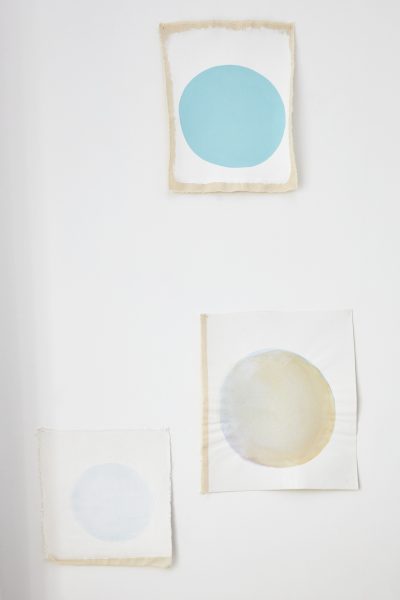 Penisero n1, Penisero n2, Penisero n3,
Penisero n1, Penisero n2, Penisero n3,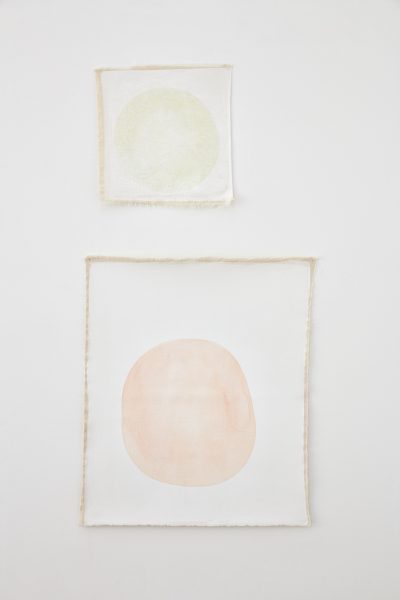 41_X9A3569
41_X9A3569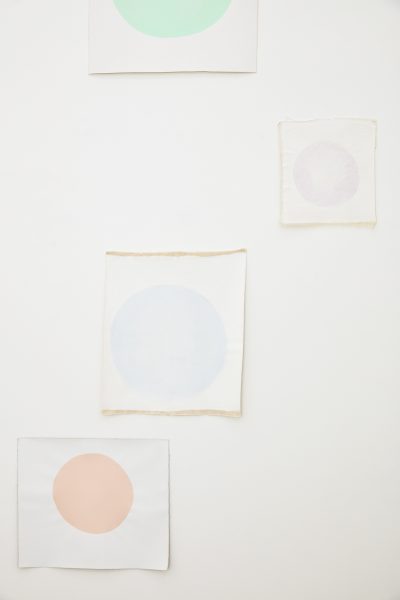 42_X9A3570
42_X9A3570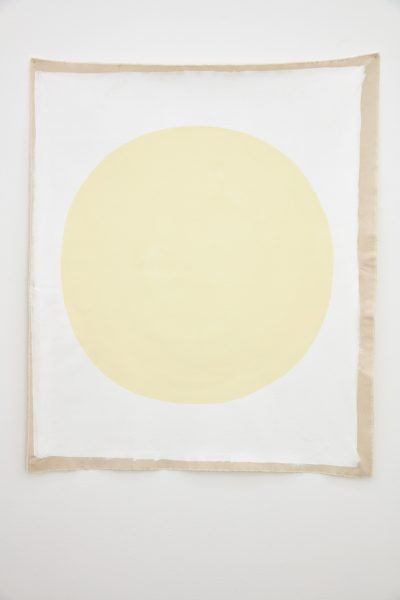 43_X9A3571
43_X9A3571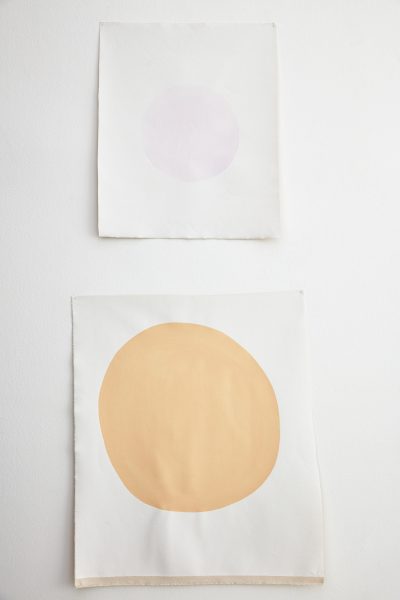 47_X9A3575
47_X9A3575
























